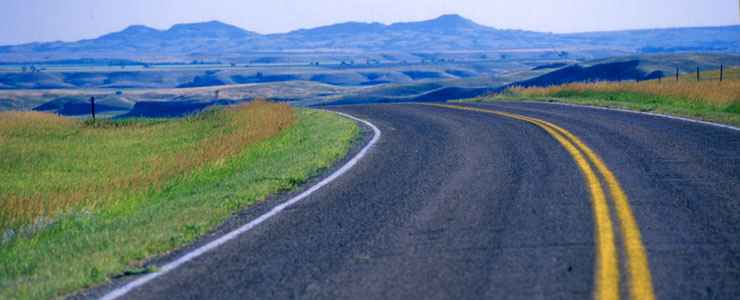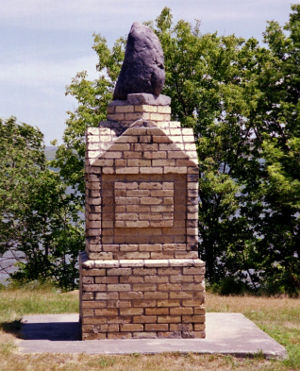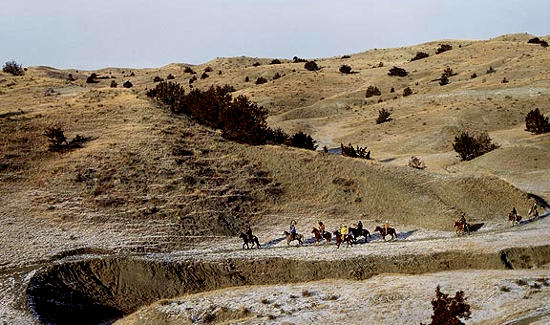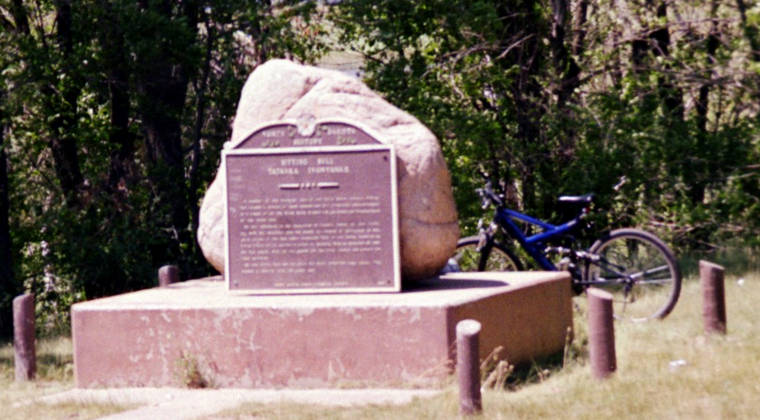Native American Scenic Byway

Typical view along the Native American Scenic Byway

The Standing Rock Monument
In its 357 miles, the Native American Scenic Byway crosses the reservations of four tribes of Lakota Sioux: Lower Brule, Standing Rock, Crow Creek and Cheyenne River. Along the way it passes by many monuments, memorial markers, museums and sites sacred to the Native Americans of the area.
The countryside is an expansive area of tallgrass prairie. The route of the Native American Scenic Byway roughly parallels the route of the Missouri River through this part of North and South Dakota.
Near Chamberlain is the Akta Lakota Museum, a site where you can enjoy hands-on exhibits and displays of authentic Sioux handicrafts, including traditional multi-colored weavings of porcupine quills.
When crossing the Cheyenne River Reservation you'll find kiosks displaying interpretive panels detailing the history of the area and the people who live(d) there.
On Standing Rock Reservation you'll find the Sitting Bull Monument, commemorating one of the most famous chiefs of the Sioux. Sitting Bull was an obstructive force in the face of Army-backed white encroachments on the sacred Black Hills that had already been given to the Sioux in earlier treaties "in perpetuity." After fighting several battles with the Army, he was finally captured and sent off to prison. He survived war, prison and exile, only to be killed in a misunderstanding over a tribal ritual dance.
Near the Sitting Bull Monument is the Standing Rock Monument, overlooking the Oahe River on the east side of Fort Yates. Legend has it that the hunched-over rock is really the stubborn wife of a Lakota warrior turned to stone.

Tribe members participating in the Oomaka Tokatakiya Ride
(in memory of ancestors, in honor of future generations)

Sitting Bull Monument
Lower photo courtesy of Ken Marchionno © 2006, via Byways.org
Other photos are in the Public Domain